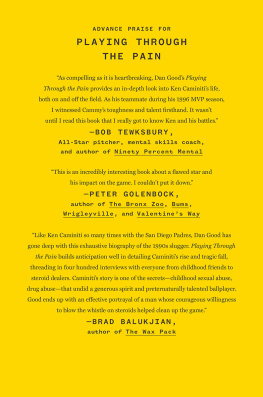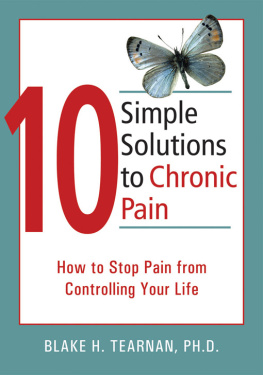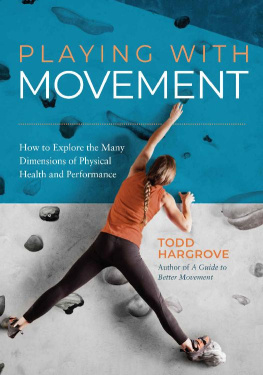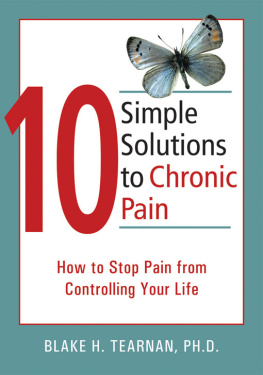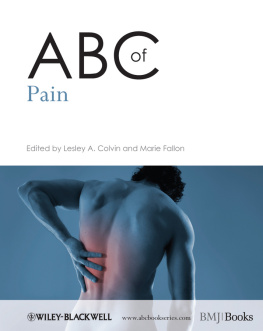Dan Good - Playing Through the Pain
Here you can read online Dan Good - Playing Through the Pain full text of the book (entire story) in english for free. Download pdf and epub, get meaning, cover and reviews about this ebook. year: 2022, publisher: Abrams, genre: Non-fiction. Description of the work, (preface) as well as reviews are available. Best literature library LitArk.com created for fans of good reading and offers a wide selection of genres:
Romance novel
Science fiction
Adventure
Detective
Science
History
Home and family
Prose
Art
Politics
Computer
Non-fiction
Religion
Business
Children
Humor
Choose a favorite category and find really read worthwhile books. Enjoy immersion in the world of imagination, feel the emotions of the characters or learn something new for yourself, make an fascinating discovery.
- Book:Playing Through the Pain
- Author:
- Publisher:Abrams
- Genre:
- Year:2022
- Rating:4 / 5
- Favourites:Add to favourites
- Your mark:
- 80
- 1
- 2
- 3
- 4
- 5
Playing Through the Pain: summary, description and annotation
We offer to read an annotation, description, summary or preface (depends on what the author of the book "Playing Through the Pain" wrote himself). If you haven't found the necessary information about the book — write in the comments, we will try to find it.
Dan Good: author's other books
Who wrote Playing Through the Pain? Find out the surname, the name of the author of the book and a list of all author's works by series.
Playing Through the Pain — read online for free the complete book (whole text) full work
Below is the text of the book, divided by pages. System saving the place of the last page read, allows you to conveniently read the book "Playing Through the Pain" online for free, without having to search again every time where you left off. Put a bookmark, and you can go to the page where you finished reading at any time.
Font size:
Interval:
Bookmark:
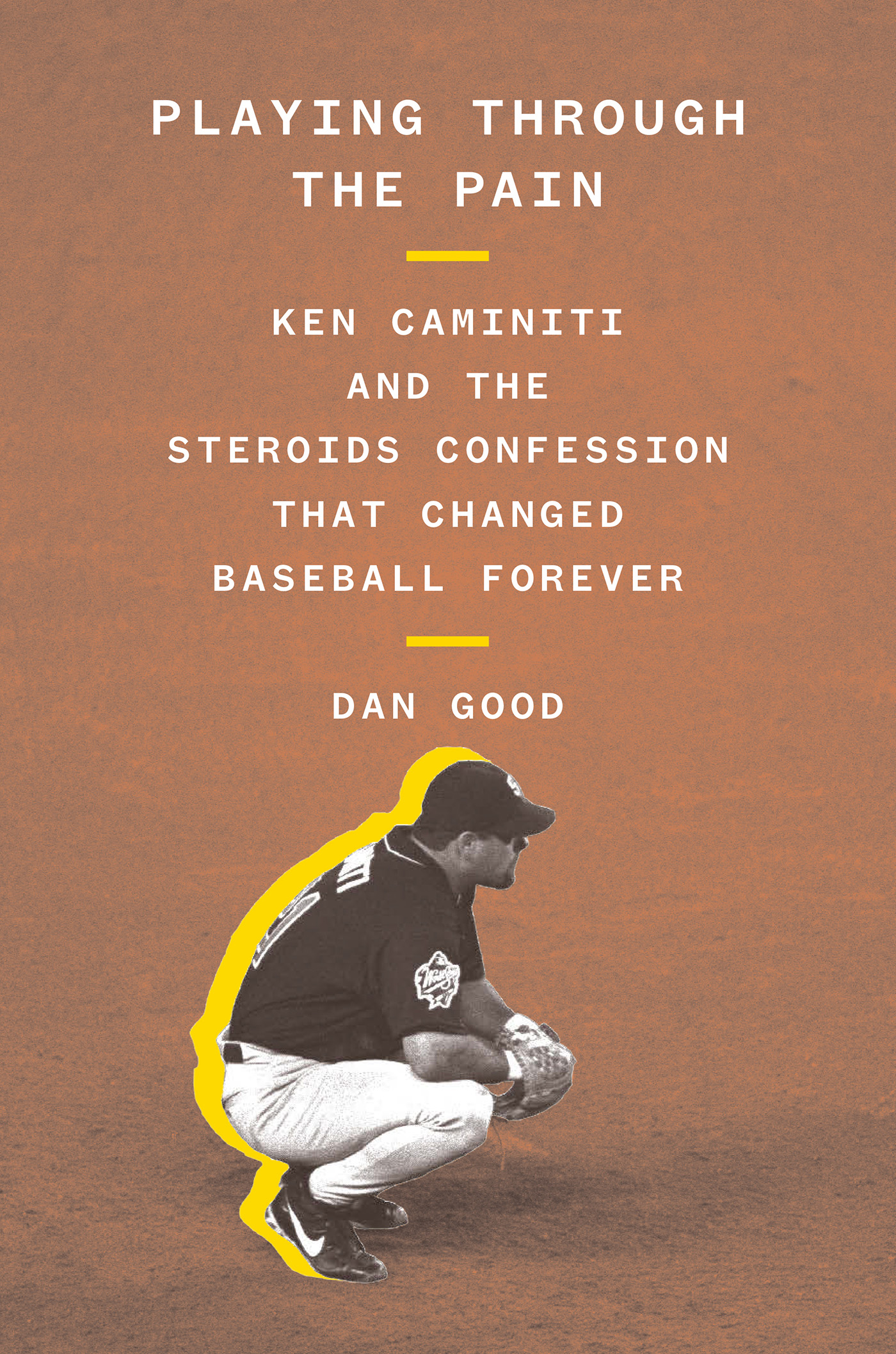

Copyright 2022 Dan Good
Cover 2022 Abrams
Published in 2022 by Abrams Press, an imprint of ABRAMS. All rights reserved. No portion of this book may be reproduced, stored in a retrieval system, or transmitted in any form or by any means, mechanical, electronic, photocopying, recording, or otherwise, without written permission from the publisher.
Library of Congress Control Number: 2021949393
ISBN: 978-1-4197-5363-3
eISBN: 978-1-64700-256-5
Abrams books are available at special discounts when purchased in quantity for premiums and promotions as well as fundraising or educational use. Special editions can also be created to specification. For details, contact specialsales@abramsbooks.com or the address below.
Abrams Press is a registered trademark of Harry N. Abrams, Inc.
| ABRAMS The Art of Books |
Ken Caminitis world was falling apart, again, but he was in New York City trying to make things right.
The veteran third baseman spent his career waiting for this momenthed endured so many lost years on bad teams in worse uniforms. He was finally playing for a winner, the 1998 National League champion San Diego Padres. Going into the World Series. Four wins away from baseball glory.
But there was a problem. Those four wins would have to come against baseballs most successful franchisethe New York Yankeesin its most successful year. The Yankees steamrolled the American League in 1998, winning 121 games during the regular season and playoffs. No team had ever won that many games in a season.
But minutes before the start of Game 1, Kens mind wasnt on the Yankees, or the lost seasons, or that nights pitcher, or his hitting approach. He was dealing with other problems. Ken was back to using drugs and surrounding himself with the wrong people, leaving his marriage frayed and fueling an endless cycle of disappointment and frustration and shame.
* * *
Ken shouldnt have been playing.
His legs were failing him but that never stopped him before, and this was the World Series, dammit. Bruce Bochythe legendary skipper managing in his first World Series, who adored Ken like a sonwrote his name on the lineup card, as usual. What other options did he have? A hobbled Ken Caminiti meant more to the Padres at third base in reputation alone than a healthy George Arias or Andy Sheets (no offense meant to either, but they werent badass former MVPs whose scowls intimidated fellow players). There was always the hope that Ken would rise to the occasion, just like he had in Monterrey, Mexico, two years earlier when he got food poisoning and took IV fluid and ate a Snickers bar and, barely able to stand upright, still smacked two home runs. He wobbled as he rounded the bases that day, his accomplishments burnished into legend. Or weeks before the World Series, in the playoffs against the Atlanta Braves, when he slugged a tenth-inning home run to put the Padres one step closer to the Fall Classic.
History was not on San Diegos side. The Padres had reached the World Series once before but lost. The Yankees, meanwhile, had won twenty-three world championships on the strength of players like Ruth and Gehrig and DiMaggio and Mantle and Berra. One more title would tie the Yankees for the most championships in North American professional sports.
On paper, Yankees versus Padres in 1998 made David versus Goliath look like an even matchup. As if the challenge wasnt difficult enough for San Diego, the World Series was opening in Yankee Stadium, a concrete-and-steel cathedral that had experienced more winning than a two-headed coin.
The night of Game 1, October 17, 1998, was crisp and clear, 56 degreesfans brought long-sleeve shirts and 60-grit-sandpaper personalities. The 4 and D subway lines shuttled the sardines decked in navy and white to 161st Street. The unfortunate souls who chose to wear San Diego gear could expect to face death threats and Fuck-the-Pad-res chants. It wasnt personal. It was the Yankees.
Red, white, and blue bunting covered the stadiums edges, a patriotic touch for the extra-special occasions such as the 1998 World Seriesthe capstone to one of major league baseballs magical seasons, when a home run chase between sluggers Mark McGwire and Sammy Sosa enthralled the nation. The two men went on a summer-long testosterone tour, smacking dingers at a prodigious rate. Few questioned the home run display, and those who did were brushed aside. We were blinded by power. We were back in love with baseball.
* * *
The drive from Yankee Stadium to the Bronxs Hunts Point section takes less than fifteen minutes if traffic is thin.
The direct route takes you east on 161st Street, underneath the elevated subway platforms, swerving around pesky double-parkers. The route twists and turns, and you follow it. Along the way, the rust and graffiti and decay become more prevalent. Duck under a highway overpass, and then you reach the 1200 block of Seneca Avenue.
If heroes are made at Yankee Stadium, people are overlooked on Seneca Avenue. A man sits on a stoop, scanning the passing cars. Children play in the shadows of surveillance cameras, throwing matchbox cars at birds. An apartment building is wedged in the middle of the block, identified by a stucco sign on the front: the ruth apt.
On a different October day not far removed from his World Series appearance playing in the House That Ruth Built, Ken Caminiti spent his final moments here.
He could have been anywhere else.
BATMAN
Kenny was always trying to fly.
Thats what he was doing on the stairs at two and a half years oldhe thought he was Batman, the caped crime-fighting crusader played on TV by Adam West. Instead of flying, Kenny tumbled down the stairs, 30 pounds of energy and dreams and rug burns. Come to think of it, Batman never actually could fly.
Given Kennys aerial and athletic pursuits, Cordoy Lane was just about the perfect place for him to grow up. The streetpart of the Cambrian Park neighborhood in southern San Jose, Californiawas developed in phases, starting with Kennys section in the 1960s, then growing to include a perpendicular addition so it resembled a curved L shape. The curve at the intersection of those two ends made an ideal spot for pickup games.
The neighborhood was surrounded by plum orchards and open fields and rock quarries, and given the proximity of schoolsmore than a dozen within two milesyou could usually find a baseball, football, or basketball game in progress by hopping on your bike and riding around for a few minutes. With so many young families, kids voices served as a neighborhood soundtrack. The neighborhood and houses and street and schools and sports fields were all new, a reflection of San Joses growth. It was a nice middle-class upbringing, in contrast to the citys overlooked minority and lower-income neighborhoods and the ritzy town of Los Gatos a few blocks south.
Kennys family lived at 5129 Cordoy Lane, a split-level home with a garage and four bedrooms. Their house had a swimming pool in the backyard. Families living nearby would become the Caminitis friends. The Rosses. The Weedens. The Costantinis and Noriegas. Steve Rienhart lived across the street from the Caminitis and was Kennys age. It was a dead-end street for a lot of years, so out in front of the houses, out in the orchard next to us or the field a few blocks away or the quarry, there was plenty of open dirt to go play in, Rienhart said.
Font size:
Interval:
Bookmark:
Similar books «Playing Through the Pain»
Look at similar books to Playing Through the Pain. We have selected literature similar in name and meaning in the hope of providing readers with more options to find new, interesting, not yet read works.
Discussion, reviews of the book Playing Through the Pain and just readers' own opinions. Leave your comments, write what you think about the work, its meaning or the main characters. Specify what exactly you liked and what you didn't like, and why you think so.

